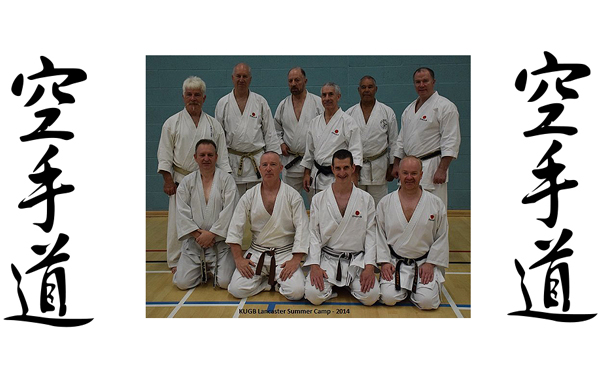Grading Information
Shotokan Karate Grades
The Shotokan Karate Grading syllabus has a range of grades, also known as kyu. When a Karate practitioner progresses beyond brown belt, the next grading is Black Belt or Shodan (1st Dan). Students wear belts which are colored to signify their grade level.
Karate belts are said to date back to the Japanese judo. Here, a system of using a variety of colored belts was used as it was felt it was the best way of determining an individuals skill level. There are many people who believe that a method of dyeing the belts was used, which may suggest why the belts get darker with each grading level. Others believe in the theory of a white belt becoming dirtier until it becomes black, which was the first method of determining someone skill, although this theory is most likely a myth.



Below is a list of the Shotokan Karate Belts. Please click on the relevant grading for a more detailed guide and syllabus for each level. Please also see below our youtube guide on how to tie a karate belt…


Karate Belts (kyu level)
Kyu-level practitioners are often called mudansha which means literally “ones without dan”. People of such ranks are considered as initiates, not students. Remember, although this is the official shotokan karate belt ranking system, many clubs will choose to follow their own system based on this.

Karate Belts (Dan level)

- 1st Dan Karate Black belt shodan: first degree black belt
- 2nd Dan nidan second degree black belt
- 3rd Dan sandan: third degree black belt
- 4th Dan yondan: fourth degree black belt
- 5th Dan godan: fifth degree black belt
- 6th Dan rokudan: sixth degree black belt
- 7th Dan nanadan: seventh degree black belt (also, shichidan)
- 8th Dan hachidan: eighth degree black belt
- 9th Dan kyuudan: ninth degree black belt
- 10th Dan judan: tenth degree black belt
Origins of the Karate Belt Grading System
Karate took its belt ranking system from Judo. As Gichin Funakoshi introduced karate, he took advice from his good friend Kano Jigoro, the founder of Judo and their ranking system.
Originally there was few kyu ranks, although it is unknown, it is thought to be three – being white brown and black. Other colors which are now in the karate ranking system today were later introduced. The first new belt color that was brought in was green, it wwas thought that this gave a seasonal meaning to the belts, white – spring, green – summer, brown – autumn and black – winter.
Some schools even now use different numbers of ranks, some choosing to omit certain ranks, however most offer all kyu ranks. There are some Karate Organizations which enforce standardization across the schools.
It is common for karate sensei’s to use tape to put a loop on the end of the belt. This indicates that the student is one level up from the original belt rank that they have already earned.
The Karate belts and ranks are beneficial in the way that they provide a benchmarking system for both instructors and students. Students can be organized quickly into groups when teaching a large class. A sensei at one glance can know what level a student is and instantly know what syllabus that person is training to.
Of course, students also get benefits from the belt system. They can set short term goals and feel a sense of satisfaction once they meet the next dan as well as confirming that they have progressed their karate ability. When a student reaches a new kyu rank, they are encouraged to work harder to progress again to the next kyu, which is usually a minimum of 3 months in training.
Once passed beyond the kyu ranks and into black belt, Dan ranks are used to provide further motivation and rewards for continuing to progress. The later dan ranks also provide this motivation to continue training, providing experts with rewards for continuing their training.

